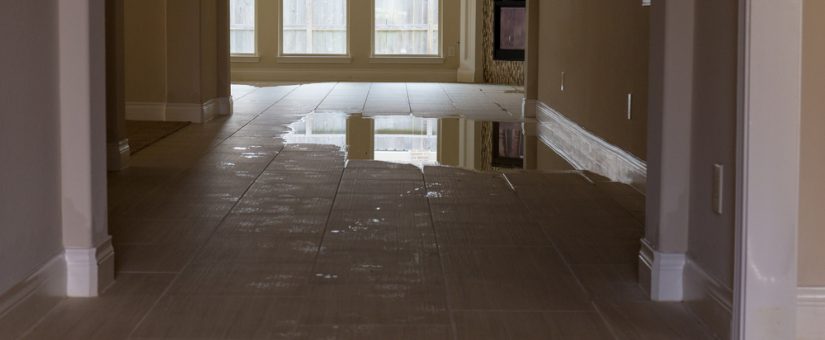What're your opinions on How to detect water leaks in your home?

Leaks not only cause waste of water yet can additionally create unneeded damage to your residence and also promote unwanted organic development. However, water leakages may go unnoticed because most of the pipework in our home is concealed. By looking as well as understanding for everyday scenarios that trigger leaks, you can protect your residence from future leaks as well as unnecessary damages. Today, we will take a look at 6 leakage triggers that might be causing your pipelines to leak.
Trespassing origins
Many water leakages start outside your house instead of inside it. If you see an unexpected decline in water pressure, claim in your tap, require time to go out as well as analyze your lawn. You may see wet spots or sinkholes in your yard, which could indicate that tree roots are attacking water lines causing water to permeate out. You can have your plumber look for intrusion, particularly if you have trees or hedges near your property.
Corroded water systems
As time goes by, your plumbing system ages and corrosion such as corrosion might begin gnawing the pipes. This may be the source of discoloration or warping on your pipes. This asks for an assessment with your plumber right away. Consider replacing the pipes considering that they are at a higher threat of corrosion than the more recent models if our plumbing system is old.
Faulty Pipeline Joints
The point at which your pipes connect is frequently the weakest link in the waterline. Pipeline joints can deteriorate in time, leading to water leaks. The majority of pipe joints are not conveniently visible. If you have noisy pipelines that make ticking or banging noises, especially when the warm water is turned on, your pipeline joints are probably under a great deal of pressure. It is recommended to have your plumber inspect your system annually.
Immediate temperature modifications.
Extreme temperature modifications in our pipes can cause them to increase as well as acquire suddenly. This expansion and contraction might cause fractures in the pipes, particularly if the temperature are listed below cold.
Poor Water Connectors
Sometimes, a leak can be triggered by loosened tubes and pipelines that provide your home appliances. More often than not, changing is what causes the loosened water Connections. You might find in the case of a washing device, a hose pipe might spring a leak due to shaking during the spin cycle. In case of a water connections leakage, you might discover water running straight from the supply line or pools around your home appliances.
Obstructed Drains
Obstructed drains pipes may be bothersome and inconveniencing, but they can in some cases wind up causing an overflow causing rupture pipelines. Maintain eliminating any kind of products that may go down your drains pipes that could clog them to avoid such inconveniences.
All the above are root causes of leaks however not all water leaks result from plumbing leakages; some leaks could come from roof leaks. All leakages need to be fixed instantly to prevent water damages.
Leaks not just create waste of water yet can also cause unnecessary damage to your residence and promote unwanted organic growth. By looking and also recognizing for daily circumstances that cause leakages, you can secure your home from future leaks as well as unnecessary damage. Today, we will certainly look at six leak causes that may be creating your pipes to drip.
At times, a leakage can be caused by loose hoses and pipelines that supply your home appliances. In situation of a water connections leakage, you may observe water running directly from the supply line or pools around your appliances.
How To Check For Water Leak In Your Home
How To Check for Leaks
The average household's leaks can account for nearly 10,000 gallons of water wasted every year and ten percent of homes have leaks that waste 90 gallons or more per day. Common types of leaks found in the home are worn toilet flappers, dripping faucets, and other leaking valves. These types of leaks are often easy to fix, requiring only a few tools and hardware that can pay for themselves in water savings. Fixing easily corrected household water leaks can save homeowners about 10 percent on their water bills.
To check for leaks in your home, you first need to determine whether you're wasting water and then identify the source of the leak. Here are some tips for finding leaks:
Take a look at your water usage during a colder month, such as January or February. If a family of four exceeds 12,000 gallons per month, there are serious leaks.
Check your water meter before and after a two-hour period when no water is being used. If the meter changes at all, you probably have a leak.
Identify toilet leaks by placing a drop of food coloring in the toilet tank. If any color shows up in the bowl after 10 minutes, you have a leak. (Be sure to flush immediately after the experiment to avoid staining the tank.)
Examine faucet gaskets and pipe fittings for any water on the outside of the pipe to check for surface leaks.
Undetected water leaks can happen without the home or business owner even realizing. If you suspect a water leak, but not able to find the source. It is time to contact a professional water leak detection service, The Leak Doctor.
How To Find a Water Leak In Your Home
https://www.leakdoctor.com/blog/How-To-Check-For-Water-Leak-In-Your-Home_AE197.html

We were shown that write-up on Common Water Leaks In House through a friend on another website. Appreciated our blog? Please share it. Help other people find it. We thank you for reading our article about Most Common Causes of Leaky Pipes.
Here